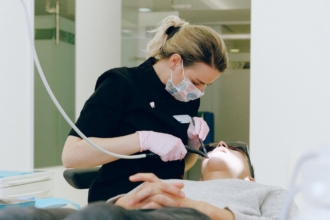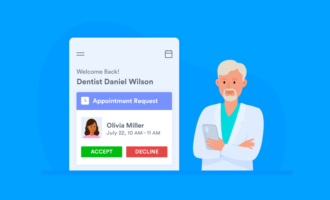Before opening or relocating your dental practice, it’s vital to do your research. Just because you favor a certain part of the city doesn’t mean it’s ideal for a dental practice — or more important, your dental practice. Dental demographics, when compiled and presented in a comprehensive report, offer analysis about numerous aspects of a local area and its population, including
- Age
- Income
- Language
- Housing types
- Education
- Existing dental practices
But how do you interpret this collection of data points? Matthew Hunter, CEO of Panett Marketing Firm, helps put the data into context. He’s worked with more than 100 professionals and practices in the dental industry, and he shares his insights on dental demographics below.
How to read reports on dental demographics
- Consider the potential customer base
- Check out the competition
- Look for other businesses that signal a good locale
1. Consider the potential customer base
Naturally, potential clients should be your first concern. Who’s going to be in your chair getting checkups and other dental procedures? More important, who can afford to be in your chair?
Hunter says that there are two main groups you should consider: families and seniors. Families are important because they typically represent multiple customers — parents and kids. Many families go to the same provider — hence the term “family dentist” — so you can reasonably expect to get two or more patients by attracting just one of the parents. “Dentists love bringing on kids because they represent longer-term revenue,” says Hunter.
Whereas families help you grow your patient base, seniors typically provide a way to garner more revenue. Seniors are likely to require more intensive dental work like root canals and other surgeries. These are more expensive than cleanings and other simple dental treatments typical with younger patients.
However, looking for places with a high density of families and seniors alone isn’t enough. You also have to consider other demographics of the local area. For example, do families have multiple children? Are the children younger or about to graduate? Are income levels satisfactory? The answer will help qualify the above groups.
2. Check out the competition
Like any business, you need to be aware of the competition. How many dentists are in the area you’re considering? How long have they been there? While dental demographics may not provide a lot of details about individual practices, they do typically include information about location, tenure, and ownership.
“You really want to get a sense of the overall competition in the area,” says Hunter. Determine whether the local market is saturated. Look at how many practices are open. Then find out exactly where they’re located so you don’t move too close to them.
But what if there aren’t any practices in the area? Hunter cautions against being the guinea pig. “In most cases, it’s best not to be the first dentist in an area, especially if you’re opening your first practice. The area may just not be suitable for dental services.”
Hunter also calls out a critical warning sign: other practices that have moved. A dentist may leave the area to avoid paying an increase in rent, or perhaps they just found a better location. However, the most likely reason is the practice didn’t get enough patients. “On paper, the area may look ideal based on other dental demographics. But if dentists are leaving, the reality is the local market isn’t worthwhile.”
3. Look for other businesses that signal a good locale
“Believe it or not, locating your dental practice near bakeries and cafes can be a good move,” says Hunter. According to tribal knowledge among dentists, having visibility near such venues correlates with more business. The thought is that people with a sweet tooth frequent places like bakeries and, unsurprisingly, tend to have more cavities. When they’re faced with this dental issue, they’re likely to recall dental practices they’ve seen near their favorite eateries.
In addition to bakeries and the like, Hunter also says that entertainment venues like game rooms and shopping malls are a good sign because they bring a lot of foot traffic and visibility. “Any business that attracts people and helps your practice be top of mind when they have dental needs is useful to consider when making your final decision.”










Send Comment: